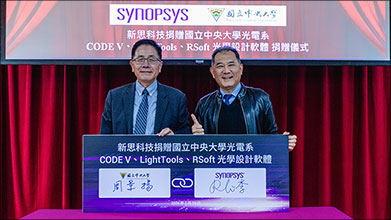Cloud native EDA tools & pre-optimized hardware platforms
LightTools Version 9.1 Brings Faster Optomechanical Modeling with SOLIDWORKS, Enhanced LiDAR Design Features, and Increased Ray Tracing Speed with Distributed Simulation Support
What's New in LightTools v9.1
We are pleased to announce the latest release of Synopsys’ LightTools® illumination design software, which introduces many new enhancements to LightTools’ comprehensive features and workflows for illumination optics design. LightTools v9.1 brings improved optomechanical interoperability with SOLIDWORKS, new tools for modeling and analyzing LiDAR, AR/VR, and biomedical systems, and a Distributed Simulation Module that increases the speed of computation-intensive ray tracing.
Efficiency enhancements to the LightTools SOLIDWORKS Link Module give illumination engineers more control and ease of use for optomechanical modeling. Users will experience faster model setup with the ability to control source placement and assign optical properties within SOLIDWORKS. In addition, they have increased design ability to access, optimize, and evaluate SOLIDWORKS flexibility and power with the configurations with LightTools.
Enhancements in LiDAR and AR/VR Technologies
LightTools provides key new features to meet demanding requirements for light detection and ranging (LiDAR) systems. using spatial and angular apodization. A new analysis feature facilitates detecting objects and determining their distance by capturing optical path length of rays, which can be used to approximate time-of-flight information necessary in various LiDAR systems. In addition, improvements to coherent ray tracing allow users to model laser sources as they propagate in free space.
LightTools provides tools to model and users can design laser sources with Gaussian and Super Gaussian light distributions analyze polarizing elements with birefringent materials, which are increasingly used in advanced applications such as AR/VR headsets, display technologies, and biomedical instruments. LightTools now supports biaxial birefringent materials to accurately model and predict behavior in systems using anisotropic materials such as mica and topaz, where the effects of polarization and dispersion are important.
Boosting Simulation and Analysis Speeds
The LightTools Distributed Simulation Module provides the capability to increase the simulation speed of large, computation-intensive ray trace processes over a network of computers. Initially introduced in v9.0 for forward simulations, this new module now also supports backward simulations. It can be particularly useful for boosting ray trace speeds for stray light and colorimetry analyses.
“The feature and workflow enhancements in LightTools are tailored to help engineers focus on solving complex design challenges and delivering innovative optical systems to market sooner,” said Stuart David, vice president of engineering in Synopsys’ Optical Solutions Group. “SOLIDWORKS users working on optical designs can expect to speed up source characterizations. Engineers developing LiDAR systems can more easily perform time-of-flight analysis. And development of advanced applications for AR/VR, displays, and medical devices is improved with LightTools’ comprehensive polarization analysis.”
Availability
LightTools v9.1 is available now. Customers with a current maintenance agreement can download this version from the Synopsys website using their SolvNetPlus account, or obtain the software from their local distributor.










